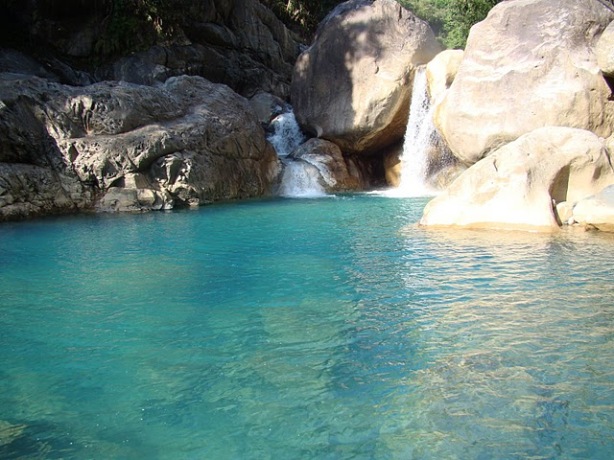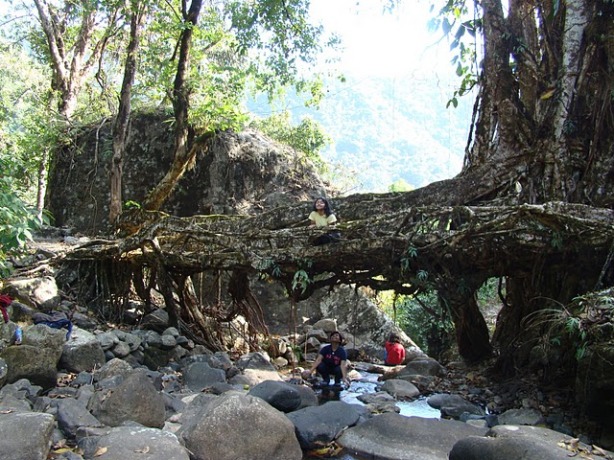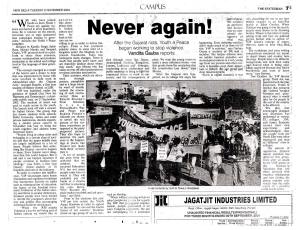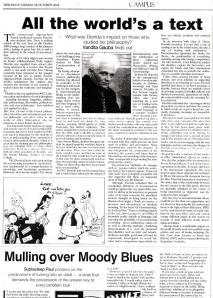We had been cautioned, forewarned and discouraged. But if there was one thing that we wanted to do on our trip to the north-east part of India, it was to walk on the Living Roots Bridge at Cherrapunjee. The name itself drew enough curiosity and the four of us were armed with little more than that.
cautioned, forewarned and discouraged. But if there was one thing that we wanted to do on our trip to the north-east part of India, it was to walk on the Living Roots Bridge at Cherrapunjee. The name itself drew enough curiosity and the four of us were armed with little more than that.
The trouble maker really was the driver and local guide we hired at Shillong. We ran into Raja, a betel-nut chewing cab driver, in between our trips to the bargain shops at Police Bazaar in Shillong. In near perfect English, the Khasi man informed us that the trek leading upto the bridge with extremely small steps was difficult and he would take no responsibility for it. We tried ignoring Raja’s warnings on the two hour drive to Cherra.
Cherrapunjee was once known as the wettest place on earth but in recent times had this title stolen by a nearby village called Mawsynram. It is still teeming with numerous waterfalls, rivers and streams. We noticed many small village settlements strewn along the hills, connected only by narrow steps leading to the main road.
Raja drove us to Sohsahrat from where the trek to the bridge began and involved going about 4 km downhill and climbing about a 1000 feet uphill. We had to cross three bridges and Noriyat village before we would reach our destination.
Throwing caution to the wind and waving bye to Raja, the four of us jogged down broad sandstone steps. With forest on either side, we observed the tall trees blooming with colourful flowers and kept our eyes out for orchids to take home. What we spotted instead were huge spiders with silvery webs glistening in the sunshine that came through the trees.
Suddenly, the 400 odd sandstone steps twisting around the hill came to an abrupt halt. What we then saw below looked like stones thrown one on top of one another. They were infact moss covered stone steps laid out carefully but narrowly to form the remaining path. We weren’t so sure anymore that we would make it to the end and back.
Huffing and puffing along silently, we stopped every few minutes to catch our breath or stare at the tall trees around us. Several locals glided by us as though they were taking a walk in a city park. The trek is used by the villagers of Nongriat, Nongthymmai and Mynteng daily in both sunshine and rain.
 We could always tell that we were nearing a bridge if he heard the sweet noise of water gurgling. But each time we thought we had arrived we discovered a shaky steel rope bridge hanging precariously over a stream. Bridges were crossed and stone steps braved to absorb such sights as a turquoise coloured natural swimming pools and vegetation like citrus fruits and milkweeds. The dried milkweed pods when picked up and turned release many white furry seeds dispersed by wind creating a most dramatic moment. Raja later informed us that the sap was used by locals for many medicinal purposes. It seemed as though a science class was finally coming alive.
We could always tell that we were nearing a bridge if he heard the sweet noise of water gurgling. But each time we thought we had arrived we discovered a shaky steel rope bridge hanging precariously over a stream. Bridges were crossed and stone steps braved to absorb such sights as a turquoise coloured natural swimming pools and vegetation like citrus fruits and milkweeds. The dried milkweed pods when picked up and turned release many white furry seeds dispersed by wind creating a most dramatic moment. Raja later informed us that the sap was used by locals for many medicinal purposes. It seemed as though a science class was finally coming alive.
After a two hour trek down and round the hill brought us to the Living Roots bridge, a most solid structure, made by taking numerous secondary roots of the Indian Rubber tree growing alongside the river.
Bio-engineered by ancient Khasi people, we were told, the roots were directed using betel nut tree trunks, sliced in the middle and positioned according to the requirement of the bridge. The roots of the Rubber tree are then passed through these hollowed out betel nut tree trunks. The roots grow towards the directed end and are allowed to take root in the soil on the opposite bank. Much stronger than the shaky iron rope bridges we had previously traversed, the bridges are known to carry 50 or more people at a time. Raja informed us that, “these bridges take upto a decade and a half to become functional but their life span keeps growing every day”.
 Far away from food, modern amenities and a washroom we couldn’t help admire the applied science of the village folk. Our minds broadened, limits stretched and lives changed forever we wondered how human life can not only adapt to inhabit any place but thrive while co-existing with all that is natural.
Far away from food, modern amenities and a washroom we couldn’t help admire the applied science of the village folk. Our minds broadened, limits stretched and lives changed forever we wondered how human life can not only adapt to inhabit any place but thrive while co-existing with all that is natural.
(Top and Bottom Photos Courtesy: Jyoti Somani)
 Dear Literary Ladies,
Dear Literary Ladies,





